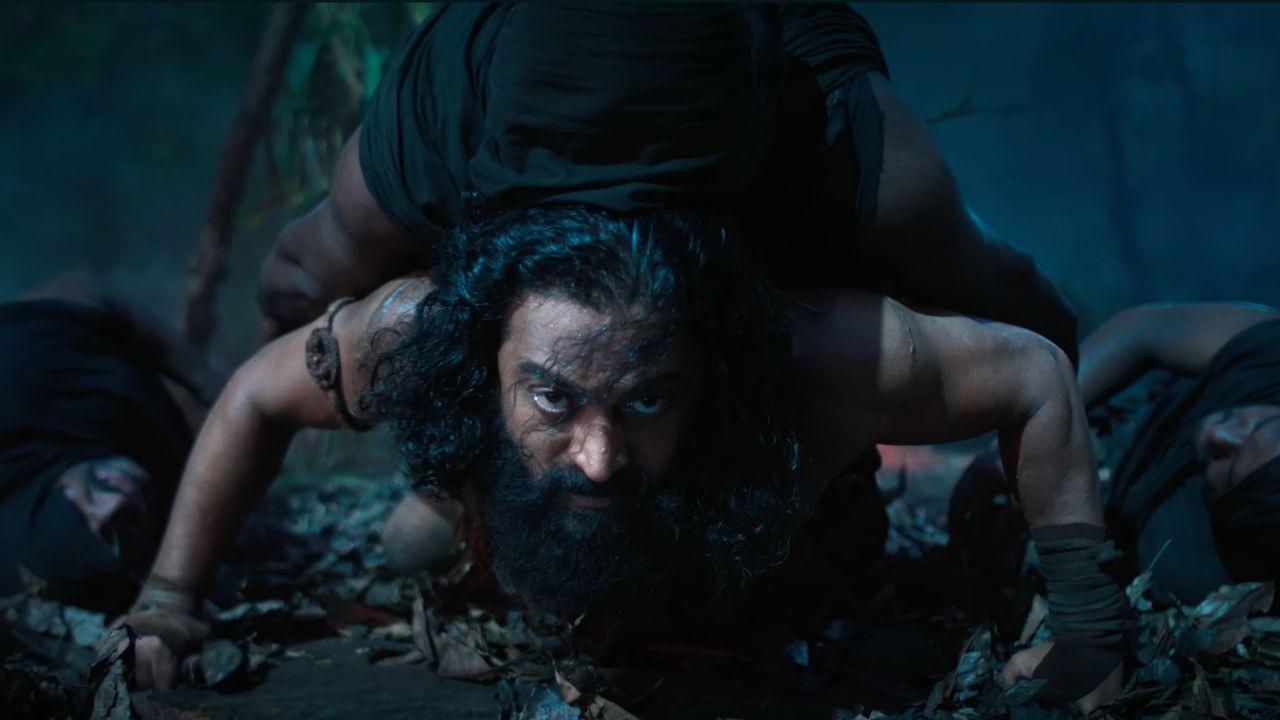Tribeny Rai’s Nepali-language debut feature Shape of Momo, chronicles the everyday lives of three generations of women in a family in rural Sikkim. The characters are complex and layered, and their choices and contradictions are moving, and unsparing. She draws us into this world with an ease, and finding disconcerting emotional peaks in seemingly ordinary moments.
After leaving her job in Delhi, Bishnu (Gaumaya Gurung) returns to her home in a remote Himalayan village. Her ailing grandmother clings to the hope that her son will take her to Dubai. Her mother (Pashupati Rai), both calm and resilient, juggles domestic chores with the demands of communal life. Her pregnant sister, Junu (Shyama Shree Sherpa), exhausted by marital strife, seeks refuge within the household. Determined to bring change, Bishnu offers advice and solutions to her family in her own progressive, and sometimes problematic way. But her interventions ripple outward, stirring conflict with neighbours and unsettling the fragile balance of her mother with the villagers. At the same time, a budding connection with Gyan (Rahul Mukhia), an architect, unsettles her further, forcing her to question not only her family’s future but also her own.
Brisk in its unveiling, Shape of Momo is not interested in taking major swings to excavate just family conflicts. Instead, it settles into the unhurried rhythm of life, where the principal characters remain closely bound to one another. Yet, beneath this seemingly tranquil existence, the film takes firm aim at a culture of acceptance, one that often disguises patriarchal impulses beneath polite façades. Bishnu, a cosmopolitan, embodies an independent outlook shaped by her life away from the village. Fiercely self-reliant, she refuses to endure or tolerate what she finds unjust. In contrast, her mother, long accustomed to village life, maintains a carefully measured balance, consulting the village chief in moments of trouble, behaving with decorum, and placing communal harmony above individual desire. Bishnu’s sister, Junu (Shyama Shree Sherpa), is pregnant and having tensions in her married life. Dependent on her husband for every necessity, she regrets not having completed her education and resents her lack of independence. Meanwhile, their grandmother, bedridden for much of the time, clings to the hope that her son will soon take her to Dubai, counting the days as she waits. Together, these three women form a generational prism. Each defined by their circumstances, each carrying a different burden of expectation and compromise. The screenplay by Rai and Kislay, moves beyond the confines of a single character study and instead reveals how womanhood, across time and context, is both inherited and negotiated. By weaving their struggles side by side, the film sharpens its critique of the quiet persistence while also illuminating the subtle ways resilience, regret, and resistance shape our daily lives.

The film opens with Bishnu reading aloud an advertisement she has written for a mobile phone to a room full of villagers. Her confident manner make the men feel proud. Yet, they promptly suggest that her mother find a husband for her, a telling sign of how central male authority remains in the community’s imagination. Within Bishnu’s own household, however, the male presence is conspicuously absent, surfacing only off-screen: an uncle living in Dubai, or Junu’s husband, heard only through telephone conversations. Bishnu herself enters into a tentative romance with Gyan and soon recognizes that the conventional roles of married life are not ones she wishes to embrace. Her interactions with men around her further reveal her guarded stance. Whether with the tenant family who buy oranges from their orchard or with Padam, the young man who helps with chores, her behaviour oscillates between assertiveness and suspicion. She also feels uncomfortable by the looming presence of strangers who have pitched their tent near her house. Their threatening presence further feeding her sense of unease. Her attitude towards men provides a perspective that starkly contrasts with the more accommodating attitudes of her mother and Junu. In this divergence lies the heart of the film. Shape of Momo is less about romance or family melodrama than about how one woman negotiates her place within a world where male absence is as much a function of patriarchy as male presence. Every response to that reality becomes a measure of survival.
Performance-wise, Gaumaya Gurung as Bishnu commands the screen with a restless intensity, portraying a modern woman negotiating independence, responsibility, and societal expectations with nuance and conviction. Pashupati Rai, as her mother, anchors the household with understated authority and a lived-in authenticity, while Shyama Shree Sherpa as Junu brings tenderness and quiet vulnerability to her role. Rahul Mukhia as Gyan adds poise and charm, offering a gentle counterpoint to Bishnu’s assertiveness.
Archana Ghangrekar’s cinematography resists postcard prettiness of the Himalayan landscape, instead captures the characters in lived-in frames that mirror the emotional rhythms of their choices. The editing by Kislay and Anil Aalayam allows silences and pauses to breathe, giving weight to quotodian gestures and subtle tensions. Ankita Purkayastha’s sound design further deepens the atmosphere, blending natural ambient sounds with diegetic textures. She creates a sonic environment that is as immersive as it is revealing of the village’s rhythms and the household’s private worlds.
Shape of Momo is a quietly powerful meditation on womanhood, family, and the invisible structures that shape our existence. It asks its viewers to observe, to feel, and to reckon with the ways patriarchy manifests in both absence and presence. Through its layered performances and thoughtful craft, the film lingers long after the final frame, reminding us that the smallest acts of our lives often carry the greatest weight.
Shape of Momo had its World Premiere at the Busan International Film Festival 2025.




